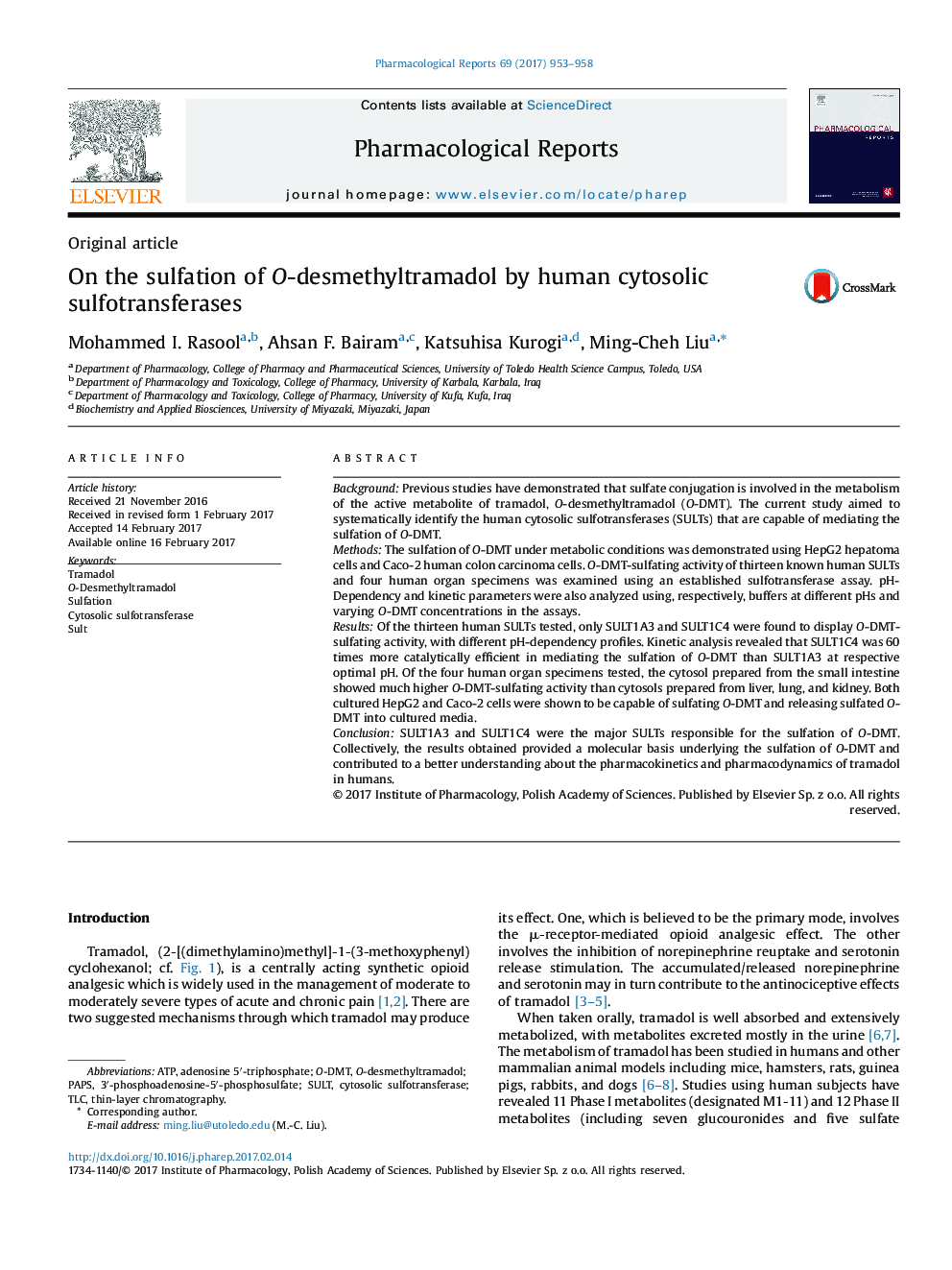| Article ID | Journal | Published Year | Pages | File Type |
|---|---|---|---|---|
| 5514980 | Pharmacological Reports | 2017 | 6 Pages |
BackgroundPrevious studies have demonstrated that sulfate conjugation is involved in the metabolism of the active metabolite of tramadol, O-desmethyltramadol (O-DMT). The current study aimed to systematically identify the human cytosolic sulfotransferases (SULTs) that are capable of mediating the sulfation of O-DMT.MethodsThe sulfation of O-DMT under metabolic conditions was demonstrated using HepG2 hepatoma cells and Caco-2 human colon carcinoma cells. O-DMT-sulfating activity of thirteen known human SULTs and four human organ specimens was examined using an established sulfotransferase assay. pH-Dependency and kinetic parameters were also analyzed using, respectively, buffers at different pHs and varying O-DMT concentrations in the assays.ResultsOf the thirteen human SULTs tested, only SULT1A3 and SULT1C4 were found to display O-DMT-sulfating activity, with different pH-dependency profiles. Kinetic analysis revealed that SULT1C4 was 60 times more catalytically efficient in mediating the sulfation of O-DMT than SULT1A3 at respective optimal pH. Of the four human organ specimens tested, the cytosol prepared from the small intestine showed much higher O-DMT-sulfating activity than cytosols prepared from liver, lung, and kidney. Both cultured HepG2 and Caco-2 cells were shown to be capable of sulfating O-DMT and releasing sulfated O-DMT into cultured media.ConclusionSULT1A3 and SULT1C4 were the major SULTs responsible for the sulfation of O-DMT. Collectively, the results obtained provided a molecular basis underlying the sulfation of O-DMT and contributed to a better understanding about the pharmacokinetics and pharmacodynamics of tramadol in humans.
Graphical abstractDownload high-res image (31KB)Download full-size image
